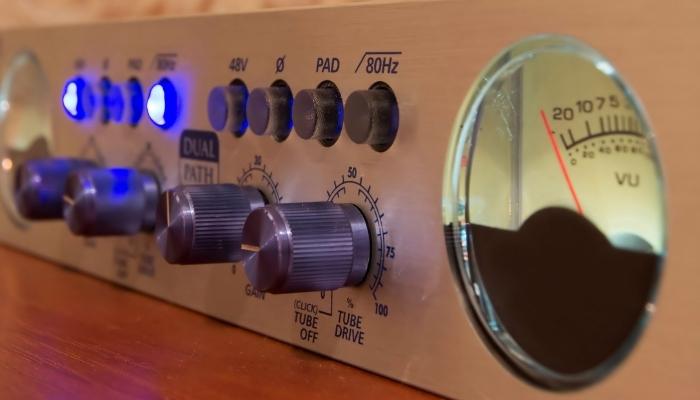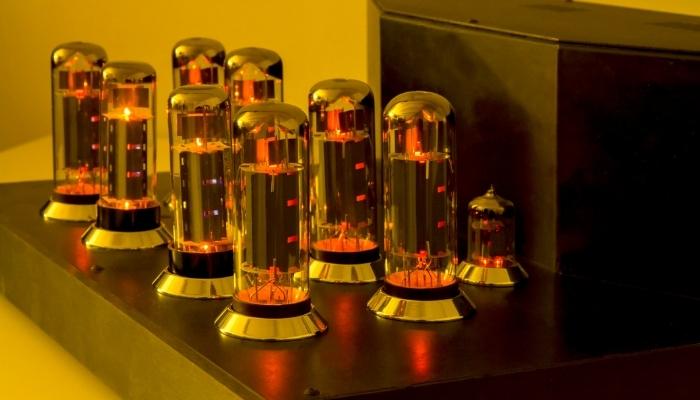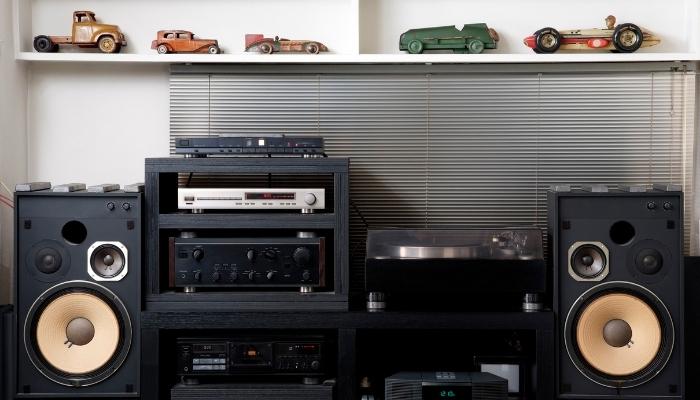For the average person, a Hi-Fi system finely tuned down to the last decibel is too much to handle. But if you're an audio enthusiast who yearns to hear every note as crisp and as authentic as if you were experiencing it in real-time, then you know the importance of getting your audio system just right.
Preamplifiers help boost your signal to the level creators meant for it to be heard. That means hearing every low, every high, and everything in between crystal clear!
Let's dive into preamplifiers, what they are, how they work, and the several types!
What is a preamplifier?

A preamplifier, or "preamp," takes a weak audio signal and amplifies it to a level where your receiver or amplifier can process it. It will boost the signal, sweeten classic components, add clarity to low distortion, and increase the dynamic range of high-headroom circuitry. That's a lot of good stuff!
How do they work?
Preamps usually contain active electronic components like transistors and vacuum tubes that require power to function. These components take the low-voltage signal from your audio source and amplify it to a higher-voltage signal that is then sent to your amplifier.
Basically, preamps increase gain to a gain stage, boosting the volume. But remember that every gain stain introduces noise to your signal, so it's best to plug your preamp into your line inputs instead of the interface's preamps.
The job of the preamp is twofold: firstly, to boost the signal so that it can be played at a high volume without distortion, and secondly, to shape the sound by adding coloration, or "flavor," to the audio. This is why preamps are essential to any Hi-Fi system; they significantly impact the overall sound quality.
Pro Tip: Correctly connecting Hi-Fi systems with preamps can be complicated! To get the best sound, contact your local integrator to set you up right the first time!
Types of Preamps

There are several types of preamps available on the market, each with its own set of features and benefits:
- Integrated Preamps: are built into amplifiers or receivers and usually offer basic functionality. These are ideal for entry-level systems or for those who want simplicity.
- Standalone Preamps: are self-contained units that offer more flexibility and control than integrated preamps. It is ideal for those who want to upgrade their system or wish for more control over the sound.
- Tube Preamps: use vacuum tubes instead of transistors to amplify the signal. They tend to add warmth, smoothness, and harmonic distortion to the sound, making it brighter while emphasizing even harmonics. This process makes them ideal for those who want a vintage sound.
- Solid-State Preamps: use transistors instead of vacuum tubes to amplify the signal. The transistor provides a "transparent," clean sound with little distortion that handles higher gain signals, which is better for instruments like drums and guitars. You can hear the sound just as if it were listening to it live — the way the artist intended.
- Phono Preamps: also known as phono stage, these are designed specifically for use with turntables. They amplify the signal from the cartridge so that it can be played at a high volume without distortion, and you hear the best sound possible.
Pro Tip: Every standalone preamp needs a power amp since a preamp isn't powerful enough to drive, or move, the speaker cones.
Why You Need One for Your Hi-Fi System

If you want to get the most out of your Hi-Fi system, then you need a preamp. Preamps offer flexibility, control, and most importantly, they improve sound quality. On top of that, preamps also handle switching between different line-level sources, so if you plan on having several sources, a preamp will keep you from manually switching between them.
You'll be able to connect to a greater number of speakers (up to 11!) without compromising your sound quality and use the preamp as a control hub for your audio system. Overall, the pros and cons boil down to these:
Pros
- Greater control over the whole system
- Better sound quality than A/V receivers can provide
- Increase your speaker output from five channels to eleven
- The dedicated power source better suits the power output from the connected devices, improving the overall experience
Cons
- Replaces one component of your A/V receiver, resulting in needing other components
- More complicated setup
- Can be more expensive
- Takes up more room because it requires other pieces (like power amps) to function
Pro Tip: If you want a more complicated Hi-Fi system, let your custom integrators do all the planning, installing, and calibration!
Getting that Sweet Sound

Now that you know more about the importance and the types of preamps, it's time to get the sweet sound of your dreams! And PAVE] has all the audio magic you're looking for and the specialist know-how, so you never have to do any of the heavy lifting.
If that sounds like a great plan (because it is), contact us to set up your consultation appointment! We'll walk you through every step!